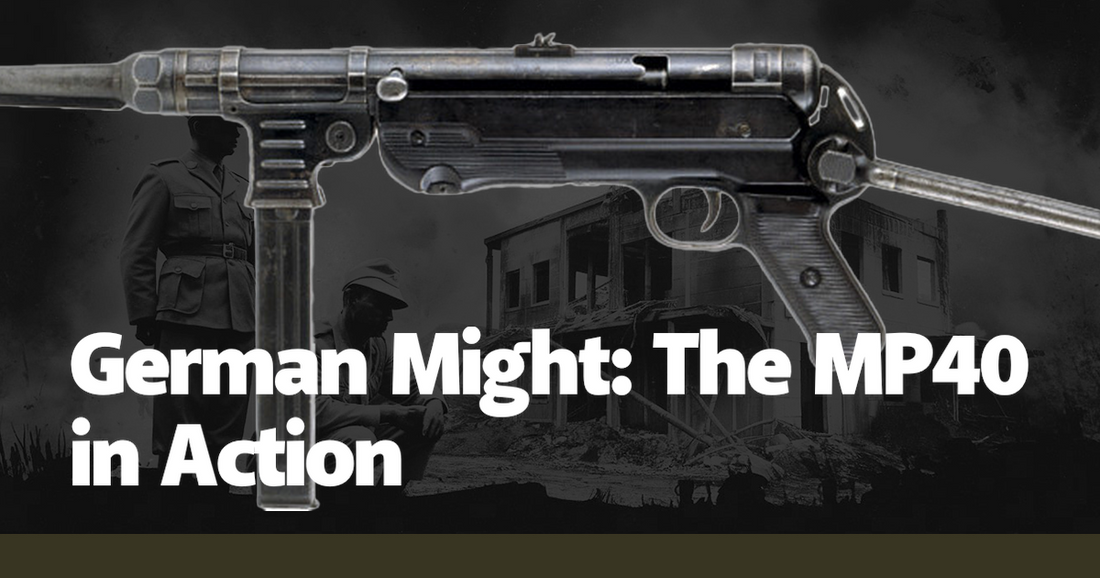In the annals of military history, few weapons have achieved the iconic status of the MP40, the Maschinenpistole 40. This submachine gun, developed by Nazi Germany during World War II, epitomized the blend of engineering prowess and battlefield utility. Its sleek design and efficient mechanics made it a favorite among German soldiers, and it quickly became synonymous with the Wehrmacht's infantry might. The MP40 was not just a weapon; it was a symbol of the German war machine's technological edge, a tool that shaped numerous battles and influenced subsequent firearm designs.
The MP40 was designed by Heinrich Vollmer, who improved upon the earlier MP38 model. Vollmer's design emphasized simplicity and mass production, crucial in a war where resources were often stretched thin. The MP40's construction used stamped metal parts, which allowed for faster and cheaper production compared to the more labor-intensive machined parts of its predecessors. This innovation meant that the MP40 could be produced in large quantities, ensuring that German troops were well-equipped even as the war dragged on. The weapon's 9mm Parabellum cartridge was effective at close to medium ranges, making it ideal for the urban and trench warfare that characterized much of World War II.
On the battlefield, the MP40 proved its worth time and again. Its relatively low recoil allowed for greater accuracy during rapid fire, a crucial advantage in the chaotic environments of war. Anecdotes from the Eastern Front highlight the MP40's effectiveness in the brutal close-quarters combat that was common in the Soviet Union's vast urban landscapes. German soldiers, often outnumbered and facing fierce resistance, relied on the MP40's reliability and firepower to hold their ground and push forward. The weapon's folding stock and compact design made it particularly suited for paratroopers and tank crews, who needed a powerful yet portable firearm.
One of the most famous instances of the MP40 in action occurred during the Battle of Stalingrad. In the ruins of the city, German soldiers engaged in desperate house-to-house fighting against tenacious Soviet defenders. The MP40's compact size and automatic fire capability gave German troops a significant advantage in these close-quarters engagements. Veterans of Stalingrad often recounted how the MP40's rapid fire could clear a room in seconds, turning the tide of skirmishes that could have otherwise ended in stalemate or defeat. The weapon's performance in such dire conditions cemented its reputation as a formidable tool of war.
The MP40 was not without its flaws, however. Its open-bolt design, while simplifying production, made it more susceptible to dirt and debris, which could cause jamming. Soldiers had to be meticulous in maintaining their weapons, a challenging task in the harsh conditions of the Eastern Front and North African deserts. Despite these issues, the MP40's overall reliability and ease of use meant that it remained a staple of the German arsenal throughout the war. Its impact was so profound that Allied forces often picked up and used captured MP40s, a testament to the weapon's effectiveness.
In addition to its battlefield prowess, the MP40 had a significant cultural impact. It became a symbol of German military might, featured prominently in wartime propaganda and post-war media. Films, books, and video games have perpetuated the MP40's image as an emblem of World War II combat. This enduring legacy speaks to the weapon's iconic status and the role it played in shaping the course of the war. The MP40's distinctive silhouette and rapid-fire capability have made it a recognizable and feared instrument of war, even decades after the conflict ended.
The influence of the MP40 extended beyond World War II, impacting the design of future firearms. Its emphasis on simplicity and mass production inspired subsequent submachine gun designs, including the famous American M3 "Grease Gun" and the Soviet PPSh-41. These weapons adopted similar principles of using stamped metal parts and straightforward mechanics to create reliable and cost-effective firearms. The MP40's legacy can be seen in the evolution of modern submachine guns, which continue to prioritize ease of use and production efficiency.
In conclusion, the MP40 was more than just a submachine gun; it was a symbol of German engineering and military strategy during World War II. Its design, battlefield performance, and cultural impact have left an indelible mark on military history. The MP40's story is one of innovation, adaptation, and relentless efficiency, qualities that defined the German war effort. As we reflect on the MP40's role in shaping the outcomes of numerous battles, we are reminded of the profound influence that a single weapon can have on the course of history. The MP40 remains a testament to the might and ingenuity of the German military, a legacy that continues to be studied and admired by historians and military enthusiasts alike.

